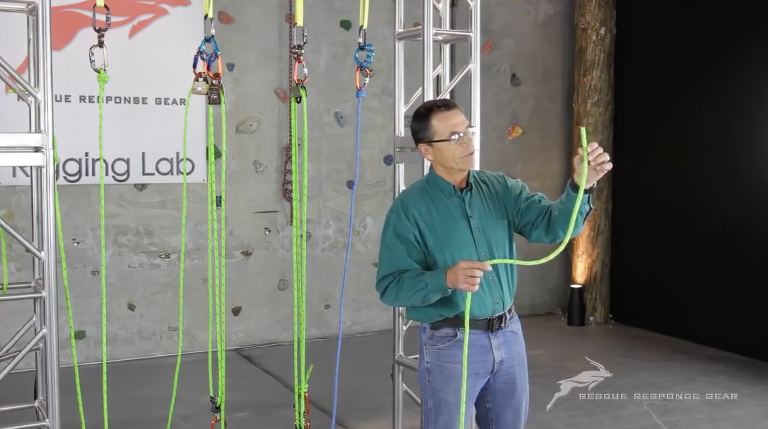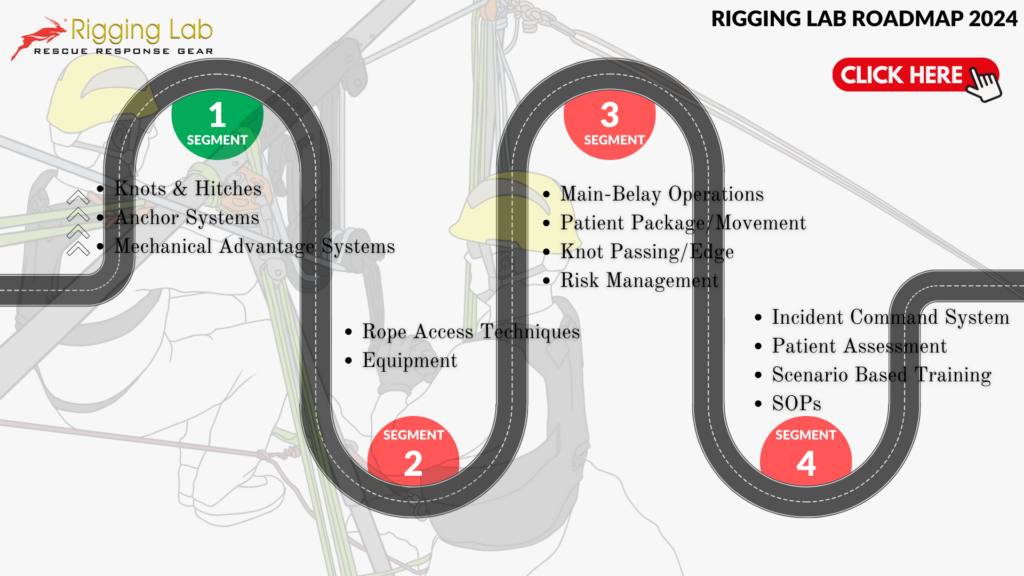Within the scope of rescue rigging and rope work, understanding the language and terms used can often be as critical as learning the techniques themselves. This segment isn’t just about imparting knowledge on how to tie knots but aims to clarify the commonly misunderstood terminologies in the field. By breaking down these terms, we hope to eliminate confusion and foster a deeper understanding of rope work dynamics.
Identifying Parts of the Rope
- Working End (or Running End): This is the part of the rope actively used to tie knots. It’s the dynamic end involved in the creation of knots or in securing objects.
- Standing Part: The longer section of the rope not involved in knot tying, usually extending towards the rope bag or remaining coiled. It serves as the base or the passive part of the rope during knot tying.
Understanding Basic Rope Configurations
- Bight: A bight forms when the rope is doubled back on itself to create a ‘U’ shape without crossing over. This configuration maintains two parallel strands, akin to railroad tracks, and is essential for connecting components or creating attachment points.
- Loop: Unlike a bight, a loop involves a crossing of the rope strands. This can be configured with the working end either over or under the standing part. Loops are foundational in many knots, including the bowline.
Practical Examples and Applications
- The Bowline: Starting with a loop, the working end passes through, wraps around the standing part, and then re-enters the loop. This knot illustrates both a loop and a bight within its structure, serving as a practical example to differentiate the two terms.
Terminology in Context
- Gain: In rigging, ‘gain’ refers to the overall dimensions and configuration of the setup. Managing gain is crucial, especially in confined spaces like under tripods, where maximizing efficiency and workspace is necessary. Understanding and controlling gain is vital from the very first knot tied in any rigging operation.
Clear communication through the correct use of terminology is essential in rigging and knot tying, as it ensures safety, efficiency, and effectiveness. By familiarizing oneself with these basic terms and their practical implications, one can enhance their skill set and confidence in handling rope work. Whether it’s for rescue operations, industrial applications, or recreational climbing, mastering this language is a fundamental step towards competency in any activity involving ropes.
Peace on your Days
Lance










